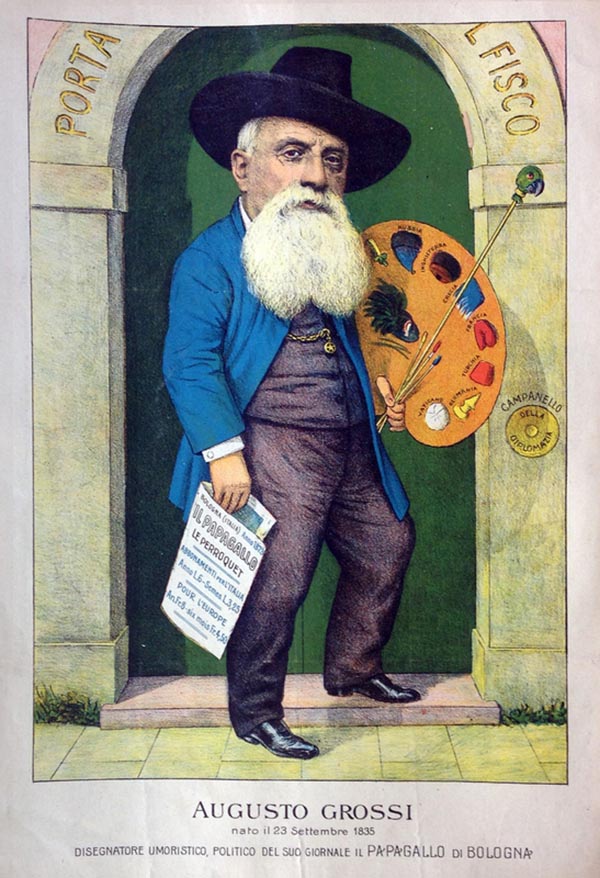Augusto Grossi (September 23, 1835 - 1919) was an Italian designer, painter, caricaturist, and publisher active in Bologna in the latter part of the 19th century and early 20th century. He studied at the Bologna Academy of Fine Arts and participated in exhibitions in 1855 and 1856. He developed a technique for drawing on lithographic stones using a fat-based pencil. Grossi's first caricature work was in the biweekly Il Diavolo Zoppo, published with Leonida Gioannetti (18?? - January 4, 1897), between 1863 and 1865. Later, in 1865, he and Gioannetti began publishing a similar satirical newspaper, La Rana (1865 - 1912). La Rana was published in Bologna and known for its highly graphic monarchist satirical commentary on European politics. La Rana was initially only in Bologna, but quickly received national attention due to Grossi's brilliant satirical illustrations and irreverent tone. After 1879, the satirical centerfold was printed in color, further popularizing the weekly. A French edition, La Grenouille, was published from 1872, but promptly censored as subversive when it published a biting caricature of French President Adolphe Thiers. In 1873, Grossi left La Rana to publish his own magazine, Il Papagallo, dedicated exclusively to international politics. Il Papagallo was particularly popular for its regular and stunning chromolithograph centerfolds. A French version of Il Papagallo Le Perroquet was launched in 1876, and an English edition, The Parrot, launched in 1879. The foreign editions maintained the same centerfold but had more regionally appropriate text. While the English edition never attained much traction, the French edition Le Perroquet eclipsed the Italian edition in sales. In 1915, when Grossi's decline in health and World War I made publication impractical, all editions of Il Papagallo ceased. All of Grossi's newspapers consisted of a single broadsheet, which folded in half made 4 pages, including a 2-page centerfold. He also collaborated with the Greek magazine Aristophanes, providing 4 color lithographs for 11 years. In 1910 Grossi donated his lithographic stones to the Archiginnasio of Bologna. At his death in 1919, the Resto del Carlino commemorates him: 'an old-fashioned gentleman, cheerful and humorous … solitary, beloved of the family.'






